Red Hartebeest Among White Rhinos
By Glenn W. Geelhoed
Kareekloof, Great Karoo Desert, South Africa
The setting sun tinted the red hartebeest an even more glowing shade of red as we tried to stalk toward it, using the slight depression of a “loof”, a long-ago run-off that had left a tangle of boulders in the thorn scrub. The hartebeest bull, which I had first got to know in its Ki-Swahili name “kongoni”, was on to us. It kept moving, keeping just beyond the 400-meter range that I felt comfortable in attempting to shoot with the .300 Win Mag. I was now looking through the scope, having been following it earlier with the Zeiss binoculars as it was edging away from us.
At five hundred meters it stopped, looked back in our direction, and apparently unalarmed, settled down to bed for the evening. Charl and I used that short window of its inattention to crouch forward another 120 meters to come to a large rock surmounted by a small shepherd’s tree stump. This might be as good as it gets before sunset in Kareekloof. The rock and stump constituted a rifle rest, and the scope highlighted the reddish tint reflected from the hartebeest’s forequarters. This might be the magic moment in the Kareekloof desert twilight.
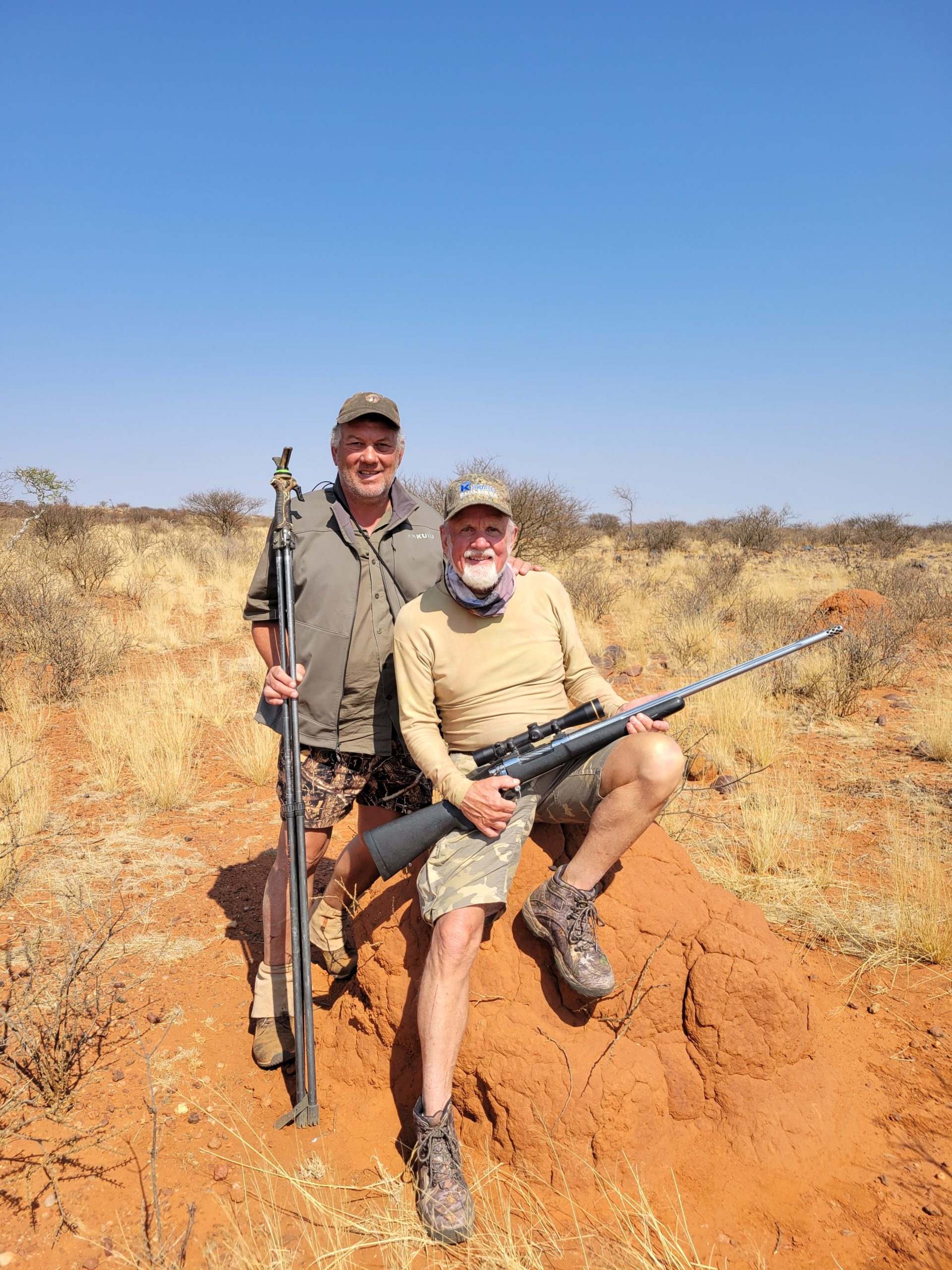
Kareekloof is in the heart of the Great Karoo Desert. It is a weigh station between Cape Town and Kimberly in the Northern Cape Province of South Africa and served as a supply post for the British during the Boer War over a century ago. “Kareek” is an endemic drought-resistant tree and “loof” is a shallow valley, so the name reflects remarkable natural history features within the sweep of the Great Karoo, a vista that extends beyond sightline in all directions. Kareekloof is a vast tract of mixed desert scrub of well over 100,000 hectares enclosed by over 29 miles of game fencing. A long, straight, dusty road and narrow-gauge railroad that passes through Kareekloof had made it the remote supply station for the British forces of the Boer War. As we were stalking through the desert “loof”, we saw the fore- and hind-hoof horseshoes of the mount of a British officer who had been shot off his horse in the conflict, and is buried, along with his horse, in a simple grave near the roadway.
That road, a lifeline for the British Expeditionary Forces during the Boer War, had constituted the supply line for Kimberly 100 kilometers north, which was booming following the discovery of the Diamond Pipe of the “Big Hole” that turned remote Kimberly into a Wild West lawless town of fortune seekers. This was before the prime minister of the Cape Colony and shrewd business tycoon Cecil Rhodes brought the lucrative wealth of the richest and
biggest hand-dug mine on earth, (which produced 2,722 kilograms of diamonds during its production from discovery July 16, 1871 to its closure in August of 1914) into a tight cartel of De Beers Consolidated. A similar hand-dug mine into an assumed diamond pipe had been dug in Kareekloof, but was abandoned as an unfulfilled promise of similar riches which we saw while walking around its relics during our hunt.
Besides the sparse kareek tree, the more common vegetation includes the blackthorn acacia, which blossoms in a small white flower in the southern hemisphere spring, but only if there has been a light rain, which had not happened for five years before my arrival in early September, putting the desert scrub at high risk of fire from the prolonged drought. As I arrived, the first rainclouds had appeared and a light rain at night caused the desert to appear frosted at dawn with a light snow cover from the overnight blackthorn blossoms. Among the blackthorn and camelthorn scrub trees were standout shepherd’s trees, which looked like ideal shade trees to accommodate travelers attempting to escape from the overhead sun at this location 29º S at 1,202 meters elevation. Bad idea. Large colonies of ticks got there first, to the regret of any warm-blooded creature seeking shade from the shepherd’s tree now shunned by most wildlife.
That wildlife is as varied as the terrain. We observed many desert tortoises, like the leopard tortoise, that has the unique capacity to capture the rarely available rainwater in a bursa beneath its carapace to be carried during prolonged droughts. We even glimpsed one endangered species known as the Karoo padloper. All around us was the evidence that anteaters are regular nocturnal excavators of the abundant anthills. The birdlife is worth a visit for the numerous desert species, and the totemic emblem of Kareekloof is the secretary bird.
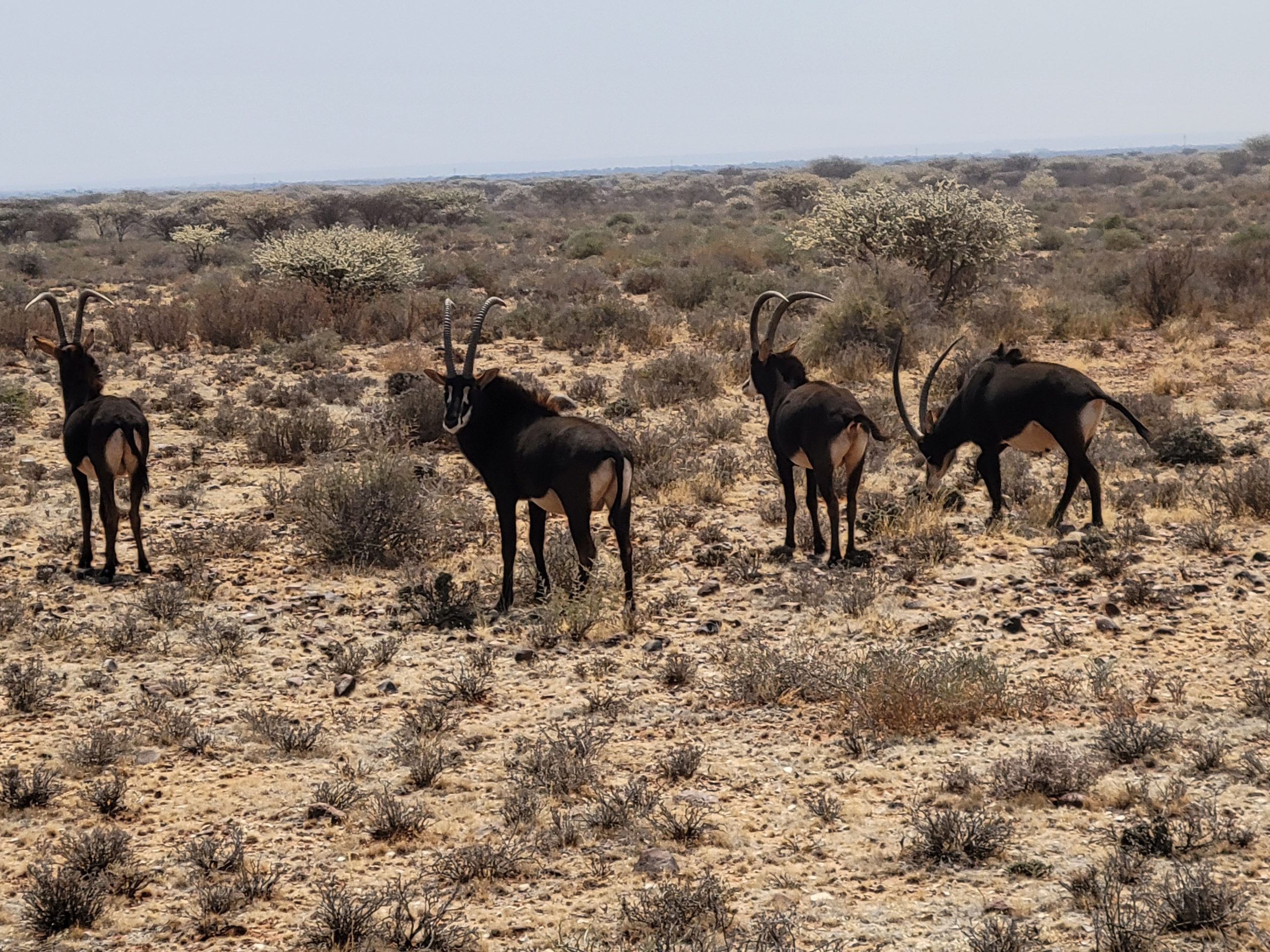
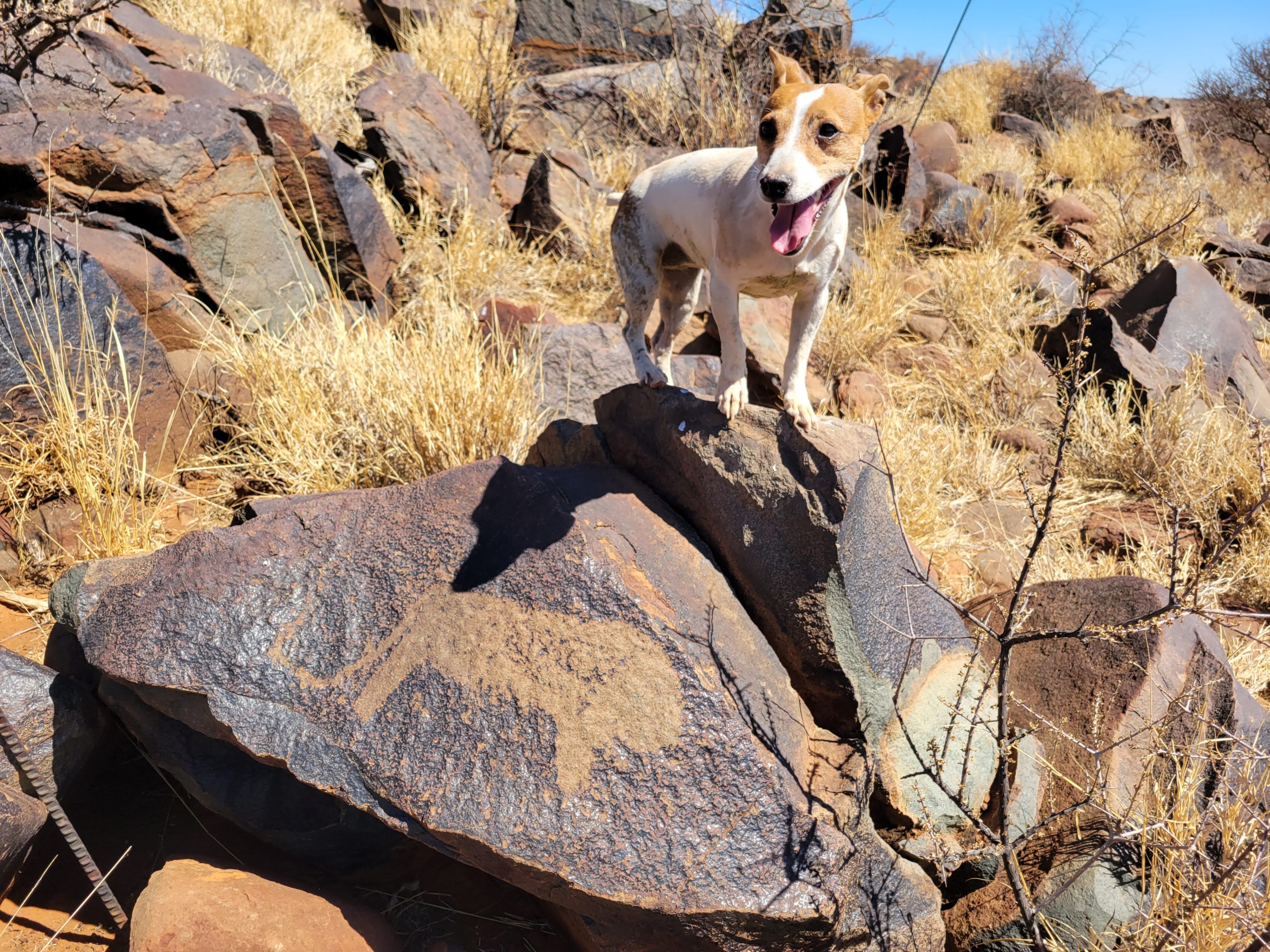
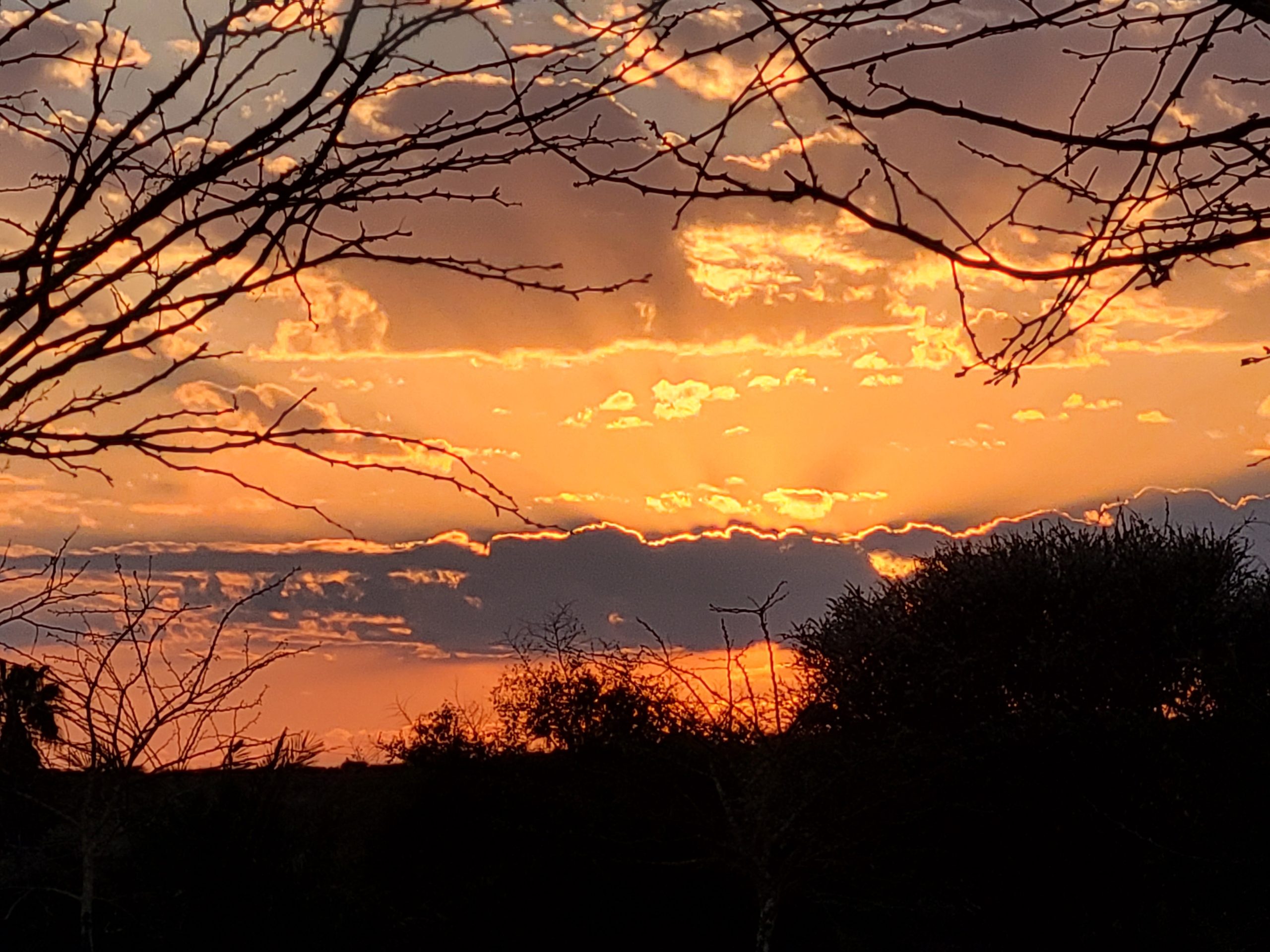
At the apex of the big game is the largest collection of free-range rhinos outside any national park, including over 180 white (“weit”, or wide-lipped savanna grazing) rhino and a dozen browsing black rhino, monitored by a 24/7 team of anti-poaching patrols. I was invited to join as an observer on the collection of an over-aged post-breeding bull white rhino that had been selected by the South African Government Game agents for an official legal rhino hunt to monitor the process that finances the protection of the rhino conservation efforts. There was abundant sable, kudu and springbok and other antelope in huntable populations, but I had come to search for a trophy red hartebeest.
I had come to Kareekloof with PH Charl Watts who was also making his first visit to this site which his PH brother Gideon Watts manages. I got to be the first hunter guided by each of the three brothers in Watts Trophy Hunting since I had hunted buffalo with the late Gee Watts in Limpopo a year previously.
The history of Kareekloof is almost as intriguing as the natural history. As part of the Boer War British supply post history the old general store is maintained a museum, with many artefacts on display. But there is deep pre-history as well, that includes rock pictographs of the earliest indigenous inhabitants showing the wildlife that was extant during the Bushmen’s inhabiting the Great Karoo Desert, millennia before the area became known to the world during the Boer War. While trekking through the Kareekloof, I saw and photographed the rock art lying as exposed as it must have been in early history when the Bushmen artists created it.
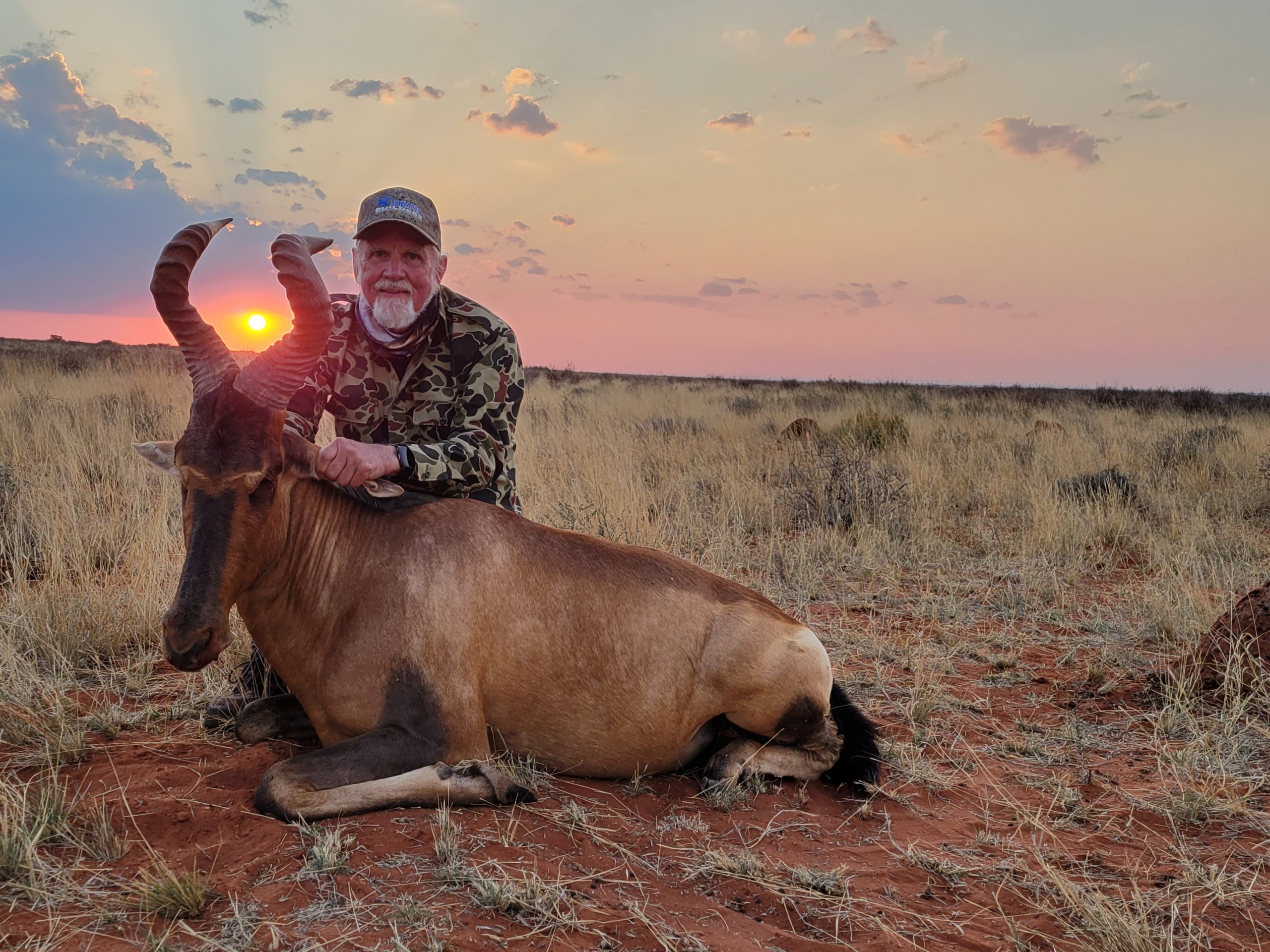
As we stalked through the desert scrub on our final day at Kareekloof, our bushman tracker Abrahm kept scanning the hoofprints in the sand, not just to find hartebeest sign, but to differentiate between the black and white rhino prints – we did not want to blunder into the short-tempered black rhino, a solitary and belligerent inhabitant of the sparse scrub cover. When we spotted at a long distance in late afternoon a small herd of hartebeest on the horizon, Abrahm left to make a wide circle to get beyond them, while we stalked a solitary distant bull that appeared to be ostracized from the group. It looked good through the glasses, but it was a long way from us and still moving further. Between us and the hartebeest we saw four big bulky forms and a fifth smaller one – dust-covered white rhinos, at least one a cow with a calf.
We moved in a downwind arc around the rhinos and tried to close the increasing gap toward the hartebeest, as the bright reddish tint of the slanting sun burnished all the bush around us with a glow like a reflection of a distant fire. We were still a long shot away, until the hartebeest sank to the sand – perhaps the twilight was a signal to bed down for the night in a clearing. This was our moment to move, and we made it to the rock that would be the shooting platform. Suddenly the hartebeest got back up on his feet and looked in our direction…
It seemed a long time after the sound of the shot that the thump of the hit drifted back to us, but by that time the hartebeest was down. As we walked to where it lay, a cloud of dust was spiraling up on the opposite horizon – the rhinos had been put to flight by the shot. The hartebeest bull was a good trophy, old and likely two years or more past breeding. As we lifted its head with the lyre-shaped horns, they framed the setting sun that had burnished it to a red glow. It was a good portrait to conclude our visit to Kareekloof in the Great Karoo.













